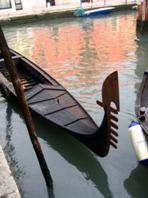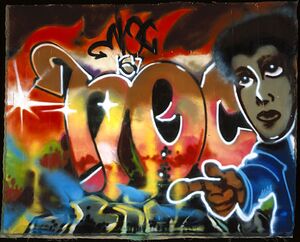Material Culture

Material Culture is a term that refers to the physical artifacts created by a culture. These artifacts are the material expression of a culture. Examples of material culture can be anything from a boat, to a coat of arms and even fragments of pieces of art.
Overview


Material culture is a significant part of the history of many civilizations. Because material culture includes anything that has an effect on the development of a culture, material culture can include anything from conventional art, like a painting or a sculpture, to graffiti on the walls of Venetian buildings. The gondolas of Venice are a perfect example of a piece of material culture. While they are indeed works of art, they are not art in the traditional sense. They serve a functional purpose in the city of Venice: they are used every day by visitors to Venice. In addition to this, they have a very long history and have served the city of Venice for hundreds of years. These gondolas are the symbol of Venice, and they are also an important piece of material culture. Just a few examples of modern material culture that can be found all over the world are[3]:
- Churches
- Graffiti
- Houses
- Factories
All of these things show different aspects of modern life for many different places around the world. However, these are only modern examples. Artifacts that show the development of a culture have been around since the origin of man.
It is important to note, however, that material culture is physical. That is, it can be touched or seen. Objects such as language, political parties, or religion lie outside the domain of material culture[4].
Types of Material Culture
Because of the broad definition of material culture, it represents many different aspects of society. The category supersedes art, due to the specific nature of "material culture." However, most items classified as material culture in Venice can be classified as public art.
Public Art
Public art is a specific type of material culture. Public art can be seen from a public place, like a walkway or a canal. There are two types of public art in Venice: monumental art and vernacular art.
Monumental Art and Vernacular Art
Monumental art and vernacular art play a large part in the history of Venice. They are both art, but there are key differences between them. Monumental art, such as the Doge's Palace, represents the large pieces of art that draws tourists to Venice. Vernacular art are the smaller pieces of art, usually created by skilled artisans to serve a functional purpose. Vernacular art can be further broken down into two categories: decorative art and functional art.
Decorative Art and Functional Art
Decorative and functional sculpture both consist of pieces that are usually crafted by hand, usually by skilled artisans. Decorative sculpture, such as confraternity symbols, coats of arms, and crosses, don't have any function other than to be decorative. Pieces of functional Sculpture, on the other hand, serve a purpose other than being decorative.
Cultural Significance
Material culture is, by definition, related to the culture of a civilization. This is less important in the United States, where the entire history of the country only spans a period of around 400 years, but in Venice, the city's history begins around 400 A.D., and so there is a significant amount of history and culture that has progressed and developed over the centuries. The material culture of Venice provides visitors and Venetians with a unique view of the city that can only be experienced by seeing the ancient buildings, boats, and art. For example, plans for the gondola, one of the most significant and recognizable pieces of public art, were first recorded in the 14th century. However, the use of boats in Venice predates this by at least 300 years[5]. In the 1000 years that boats have been used to navigate the many canals of Venice, they have changed significantly in form and function. For example, gondolas today are being used to bring tourists around the city for large sums of money. However, the gondolas were originally used as a means of transportation of Venetians throughout the city. The considerable number of pieces of public art also represent the culture of the city. Reliefs in particular depict a historical or cultural event, which provides viewers with a picture of something that happened long ago. Different reliefs were made at different points in history, which means that the different reliefs show a wide range of different events. In addition, crosses and street altars show different types of Christian art, which is especially significant in the Christian city of Venice.
See Also
References
- ↑ http://www.soulsofdistortion.nl/SODA_chapter8.html
- ↑ http://newgraffiti1st.blogspot.com/2011/01/art-of-grafiti.html
- ↑ http://www.cliffsnotes.com/study_guide/Material-and-NonMaterial-Culture.topicArticleId-26957,articleId-26850.html
- ↑ http://wiki.answers.com/Q/Differentiate_non_material_culture_and_material_culture
- ↑ http://venipedia.org/index.php?title=Gondola
Bibliography
NULL